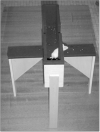A Review of Behavioral Tests to Evaluate Different Types of Anxiety and Anti-anxiety Effects
- PMID: 32702213
- PMCID: PMC7382999
- DOI: 10.9758/cpn.2020.18.3.341
A Review of Behavioral Tests to Evaluate Different Types of Anxiety and Anti-anxiety Effects
Abstract
Behavioral tests are very useful to understand the Neuro-psychotic disease and also helpful in finding the treatment of the particular disease. Nowadays various tests are available to evaluate the anxiolytics effect of a new entity or even for comparative studies with the standard drug. As per the ethics, a new compound or drug believes to have possible pharmacological effects should be tested on animals before tested on humans which have similar physiology than humans. First, rats were used for behavioral test for evaluation of anti-anxiety drug but later on the various strain of mice were added for evaluation of anxiolytics because of better genetic possibilities than rats. In this review article, we have discussed the most commonly used behavioral tests used to evaluate the anti-anxiety effect. Anxiolytics are the agent which are used to elevate anxiety effect produced due to any cause. The various parameter will be undertaken for the better and precise evaluation of anxiolytics.
Keywords: Anxiety; Elevated plus maze; Marble-burying behavior; The hole-board test; The light and dark box; The open-field test.
Conflict of interest statement
No potential conflict of interest relevant to this article was reported.
Figures






References
-
- Navarro JF, Burón E, Martín-López M. Anxiolytic-like activity of SB-205384 in the elevated plus-maze test in mice. Psicothema. 2006;18:100–104. - PubMed
-
- Ritchie H, Roser M. Mental health [Internet] [cited at 2019 Sep 22];Our World in Data. 2018 Apr; Available from: https://ourworldindata.org/mental-health.
-
- Rector NA, Bourdeau D, Kitchen K, Joseph-Massiah L. Anxiety disorders: an information guide. Centre for Addiction and Mental Health; Canada: 2008. pp. 5–5.6. - DOI
Publication types
LinkOut - more resources
Full Text Sources
Other Literature Sources
Research Materials

